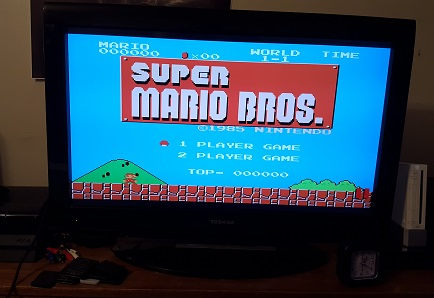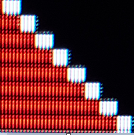Hi Lifeinsteps. Let me explain what's going on between your AVS and the HDTV. The AVS outputs a picture at 1280x720p. You have correctly concluded the AVS can only do integer scaling (or nearest neighbor). So NES native 256x240 pixels divides evenly into 1280x720 pixels an even 5x3 times, so 720p is ideally suited for upscaling the NES screen. Well 5x3 is a bit wide and doesn't look right, so we have 3x3 and 4x3 options to make the border skinnier.
Additionally, there is a scanline option that dims every third scanline, and depending on how good the scaler is on your HDTV display, can be the bee's knees or look like pants. An "ideal" display will be 1080p native with zero overscan. The result is that the display interpolates the pixel data by upscaling from 720p to 1080p, locking a 2:3 ratio. This means that NES scanline becomes 3 rows at 720p and 4.5 rows at 1080p. This creates a very clean look, especially with quality bilinear filtering.
Old mockups (4x3 mode 50% scanline intensity):
720p:
http://sta.sh/02bb7cc9dt06...
1080p:
http://sta.sh/03asg71xf25...
The best display to use for AVS, IMO, is a 1080p PC monitor, with audio bypass. PC monitors are designed for interaction (ultra low latency) never overscan, accept a wide range of resolutions and refresh rates, and have very little lag inducing post processing. I use a 1080p ASUS monitor for HD gaming. Another user posted in a thread that he used an ASUS and his display looked almost identical to my mockups.
What you see with your 1080p HDTV appears to be native 1.5x scaling. At 3x, NES pixels will be 4.5 pixels wide. At 4x, NES pixels will be 6 TV pixels wide, and at 5x, NES pixels will be 7.5 pixels wide. Squishing to 4:3 aspect will result in pixels that are 5.75 pixels wide.
Now some displays may not be 1080p native, or have overscan to various degrees. Oftentimes the OEM TV menu provides little to no adjustments for these issues. In the past, "720p" sets were available which only supported 720p or 1080i resolutions. These TVs were actually 1366x768 native and most such sets included overscan built in. The 2006 Sanyo in my living room is one example. I imagine AVS scanlines will look bad on it because each line will have varying amounts of overlap with adjacent lines in a non-uniform manner creating a varying width and intensity effect, but IDK as I have not recieved mine yet. Similar uneven issues may result from odd resolutions, 900p, 1080p native with overscan, etc, though I imagine a 1440p or 2160p (4k) widescreen monitor would be another "best" case. I would be leery of 4k HDTVs unless they are confirmed good on displaylag.com Also avoid anything advertised as "120Hz."
Hope this helps. HDTVs vary greatly even within brands, so do your homework before buying...
Originally posted by: Ozzy_98
Wow, it's like what's his butt was reincarnated.
Nope, I am still here. Now that NA mods have conveniently grouped all of the AVS related threads together, they are easier to find!

 http://goo.gl/xmzKR...
http://goo.gl/xmzKR...
 http://goo.gl/xmzKR...
http://goo.gl/xmzKR...
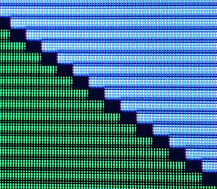
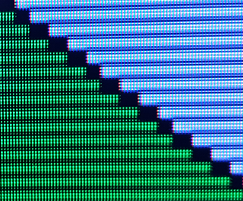
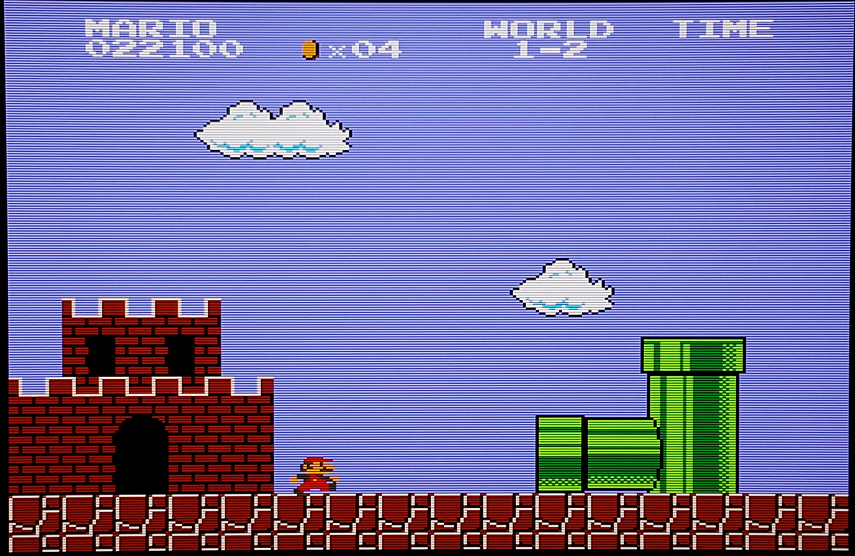
 http://goo.gl/xmzKR...
http://goo.gl/xmzKR...

